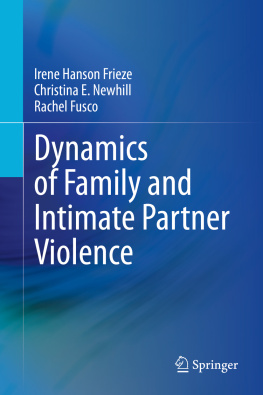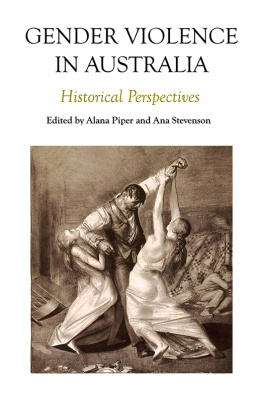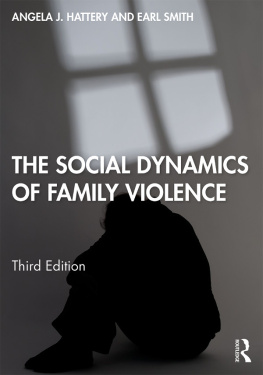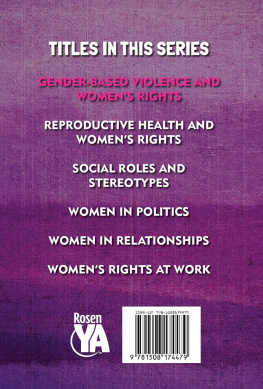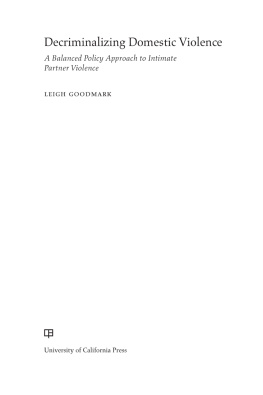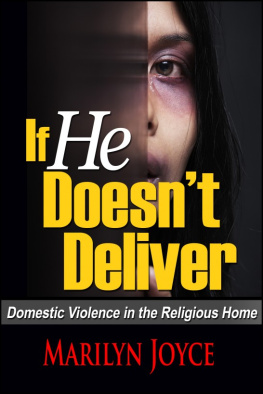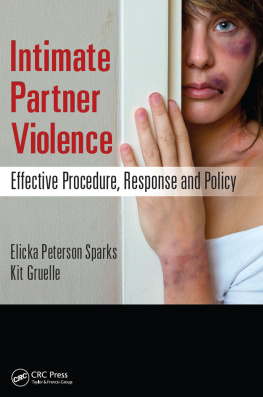Irene Hanson Frieze - Dynamics of Family and Intimate Partner Violence
Here you can read online Irene Hanson Frieze - Dynamics of Family and Intimate Partner Violence full text of the book (entire story) in english for free. Download pdf and epub, get meaning, cover and reviews about this ebook. year: 2020, publisher: Springer International Publishing, genre: Home and family. Description of the work, (preface) as well as reviews are available. Best literature library LitArk.com created for fans of good reading and offers a wide selection of genres:
Romance novel
Science fiction
Adventure
Detective
Science
History
Home and family
Prose
Art
Politics
Computer
Non-fiction
Religion
Business
Children
Humor
Choose a favorite category and find really read worthwhile books. Enjoy immersion in the world of imagination, feel the emotions of the characters or learn something new for yourself, make an fascinating discovery.
- Book:Dynamics of Family and Intimate Partner Violence
- Author:
- Publisher:Springer International Publishing
- Genre:
- Year:2020
- Rating:4 / 5
- Favourites:Add to favourites
- Your mark:
- 80
- 1
- 2
- 3
- 4
- 5
Dynamics of Family and Intimate Partner Violence: summary, description and annotation
We offer to read an annotation, description, summary or preface (depends on what the author of the book "Dynamics of Family and Intimate Partner Violence" wrote himself). If you haven't found the necessary information about the book — write in the comments, we will try to find it.
Dynamics of Family and Intimate Partner Violence — read online for free the complete book (whole text) full work
Below is the text of the book, divided by pages. System saving the place of the last page read, allows you to conveniently read the book "Dynamics of Family and Intimate Partner Violence" online for free, without having to search again every time where you left off. Put a bookmark, and you can go to the page where you finished reading at any time.
Font size:
Interval:
Bookmark:
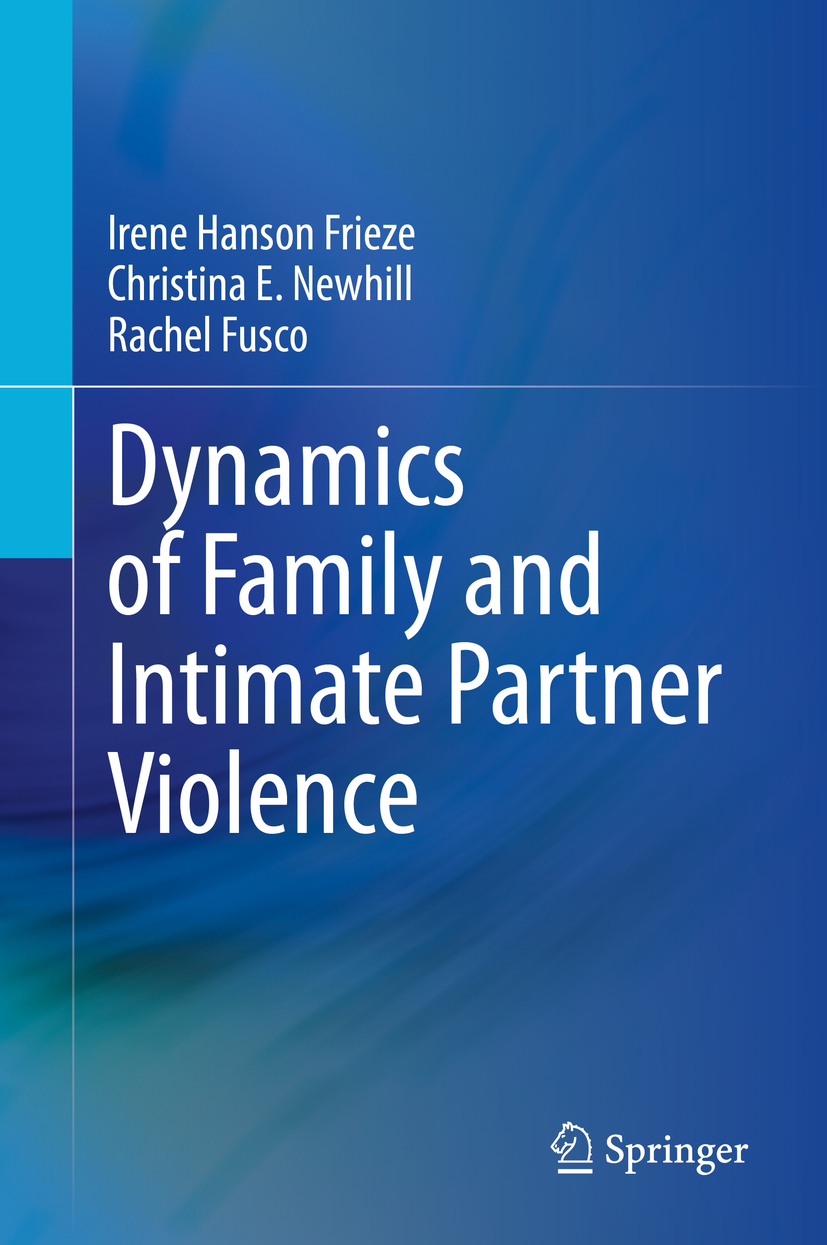

This Springer imprint is published by the registered company Springer Nature Switzerland AG
The registered company address is: Gewerbestrasse 11, 6330 Cham, Switzerland
We have written this book primarily for those working with clients experiencing violence from someone in their family or in a close relationship. Such service providers include social workers, counselors, nurses, teachers, or people in other helping professions. We also believe that students in these fields as well as in psychology or other social sciences will also find the book of interest. It is written to also be readable by the general public who might want to know more about the issues we discuss. Throughout the book, we have relied heavily on the empirical and theoretical body of research, drawing from psychology, social work, sociology, nursing, criminal justice, and many other fields. We look at those experiencing violence as well as at those who are perpetrating the violence, attempting to understand what is being done, who is doing it, how common it is, and what is being done to help those involved. We have also tied these published studies to our own clinical experiences in an attempt to provide context and make the situations we describe more vivid and real.
The body of relevant research and theory has grown tremendously since first initiated in the 1960s. In this book we draw on this long history, and also attempt to focus on current research findings and note how the field and even the things previously thought to be true have changed over time. In doing this, we draw heavily on our own work as well as the work of many others in the field. Another major goal is to integrate clinical findings into the review of published theory and empirical research. The Appendix contains actual cases from the clinical practice experiences of coauthors Christina Newhill and Rachel Fusco. We also include cases contributed by social workers Allison Little and Elizabeth Mulvaney based on their work in child welfare and gerontology, respectively. These case vignettes are based on actual client cases, but all identifying information have been removed or disguised and some cases are composite, meaning they have aspects from several clients combined. Other brief case examples have also been added throughout the book that are drawn from our personal practice experience with clients we worked with. Some published cases from the newspaper have also been used.
Irene Friezes work on intimate partner violence (IPV) began in the early 1970s when a student in Dr. Friezes Psychology of Women class came to her to talk about being beaten by her husband, wondering what, if anything, she could do about this. At that time, there was very little research on this topic that she could look to in giving suggestions. As she and her student talked more about her situation, Dr. Frieze realized how important this was for many womens daily lives, and suggested that she and the student might try to do some research on her situation and that of other women. Other students were also interested in this project, and they formed a small research group to talk about marital violence against women and to design a research project. This led to Dr. Frieze writing a formal research proposal which was submitted to and funded by the National Institutes of Mental Health in 1977. The proposal involved in depth interviews with women who had identified as being battered either through seeking help at one of the new battered womens shelters being developed in the Pittsburgh region or by looking at court filings of women seeking protection from an abusive partner, as well as volunteers solicited from posted notices in public restrooms. The researchers attempted to find a comparison sample by matching each battered woman with a randomly selected married woman from her same neighborhood. (Of course, they did not tell this potential comparison to woman why she had been selected). The women were paid a small amount for their participation. Many wanted to talk to the interviewers and told detailed stories. The longest interview lasted for 15 h, done over three sessions. To the great surprise of the researchers, about one-third of the women in the comparison group also reported receiving some type of violence from their partner, and many of the women in both the comparison and battered samples told the interviewers that they had also used violence against their partners. Following this major study, Dr. Frieze conducted many other interview and survey studies, primarily using college students as her sample, looking at intimate partner violence. An earlier book about her work as well as a review of other research, calledHurting the One You Love: Violence in Relationships, was published in 2005 by Thompson Wadsworth publishers. This present book builds on and elaborates this earlier book.
The collaboration between the three authors that initiated this book began with discussion of mutual interests between Dr. Frieze and Dr. Newhill. Incorporating her personal clinical experiences and body of written cases based on this work seemed like a major addition to the book that Dr. Frieze had been thinking of. The two began working together on the book. As we did this, we realized that since much of our work focused on victims of intimate partner violence than on other forms of maltreatment in the family, we needed a collaborator working on child abuse. We decided to ask Dr. Fusco to join the collaboration. This allowed us to include cases based on her practice experience in child welfare and in a domestic violence service agency. Both Dr. Newhill and Dr. Fusco added important perspectives to the book based on their experiences in the School of Social Work. This was an important aspect of the book and greatly enhanced the more theoretical and research-based experience of Dr. Frieze.
Font size:
Interval:
Bookmark:
Similar books «Dynamics of Family and Intimate Partner Violence»
Look at similar books to Dynamics of Family and Intimate Partner Violence. We have selected literature similar in name and meaning in the hope of providing readers with more options to find new, interesting, not yet read works.
Discussion, reviews of the book Dynamics of Family and Intimate Partner Violence and just readers' own opinions. Leave your comments, write what you think about the work, its meaning or the main characters. Specify what exactly you liked and what you didn't like, and why you think so.

